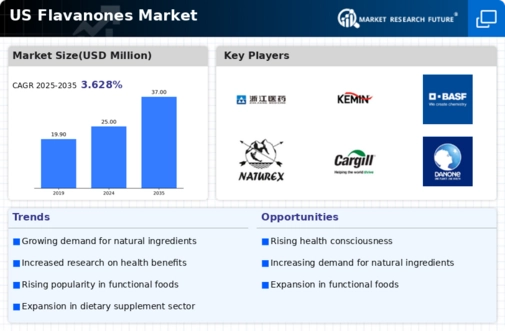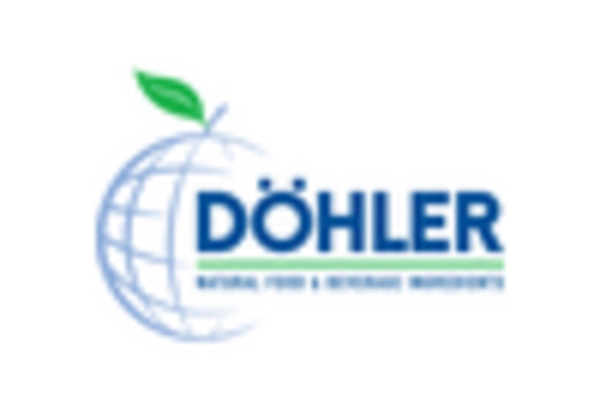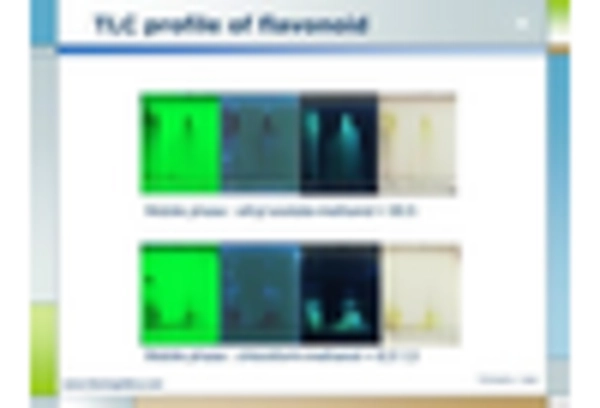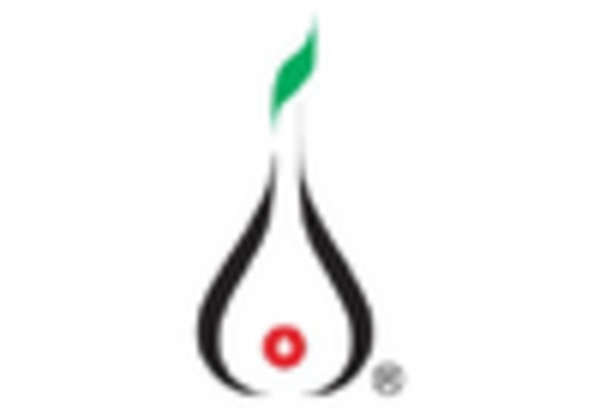Increasing Consumer Awareness
The growing awareness among consumers regarding the health benefits of flavanones is a pivotal driver for the flavanones market. As individuals become more informed about the role of flavonoids in promoting health, there is a noticeable shift towards products containing these compounds. This trend is reflected in market data, indicating that the demand for flavonoid-rich foods has surged by approximately 15% over the past year. Consumers are increasingly seeking natural sources of flavanones, such as citrus fruits, which are perceived as healthier alternatives to synthetic additives. This heightened awareness is likely to propel the flavanones market further, as manufacturers respond by incorporating these ingredients into their offerings to meet consumer expectations.
Expansion of Functional Food Sector
The expansion of the functional food sector significantly influences the flavanones market. With a growing emphasis on health and wellness, consumers are gravitating towards foods that offer additional health benefits beyond basic nutrition. The functional food market in the US has experienced a compound annual growth rate (CAGR) of around 8% in recent years, indicating a robust demand for products enriched with bioactive compounds like flavanones. This trend suggests that food manufacturers are increasingly formulating products that highlight the presence of flavanones, thereby enhancing their market appeal. As the functional food sector continues to evolve, the flavanones market is poised to benefit from this dynamic landscape.
Rising Interest in Plant-Based Diets
The rising interest in plant-based diets is a significant driver for the flavanones market. As more consumers adopt vegetarian and vegan lifestyles, the demand for plant-derived ingredients, including flavanones, is on the rise. This shift is supported by data indicating that plant-based food sales have increased by over 20% in the past year alone. Flavanones, primarily sourced from citrus fruits, align well with the principles of plant-based nutrition, making them an attractive option for health-conscious consumers. This trend not only enhances the visibility of flavanones in the market but also encourages food manufacturers to innovate and create new products that cater to this growing demographic.
Technological Advancements in Extraction Methods
Technological advancements in extraction methods are transforming the flavanones market. Innovations in extraction techniques, such as supercritical fluid extraction and enzymatic methods, have improved the efficiency and yield of flavanones from natural sources. These advancements enable manufacturers to produce higher-quality flavanone extracts at lower costs, thereby enhancing their competitiveness in the market. As a result, the availability of flavanones in various forms, including powders and concentrates, is increasing, which may lead to broader applications in food and beverage products. This evolution in extraction technology is likely to stimulate growth in the flavanones market as manufacturers capitalize on these improvements to meet consumer demand.
Regulatory Developments Favoring Natural Ingredients
Regulatory developments favoring natural ingredients are playing a crucial role in shaping the flavanones market. Recent initiatives by regulatory bodies in the US have aimed to promote the use of natural compounds in food products, thereby encouraging manufacturers to incorporate flavanones into their formulations. These regulations not only support the health claims associated with flavanones but also enhance consumer trust in products containing these ingredients. As a result, the flavanones market is likely to experience growth as companies align their product offerings with these regulatory trends, ensuring compliance while meeting the increasing consumer demand for natural and functional foods.

















Leave a Comment